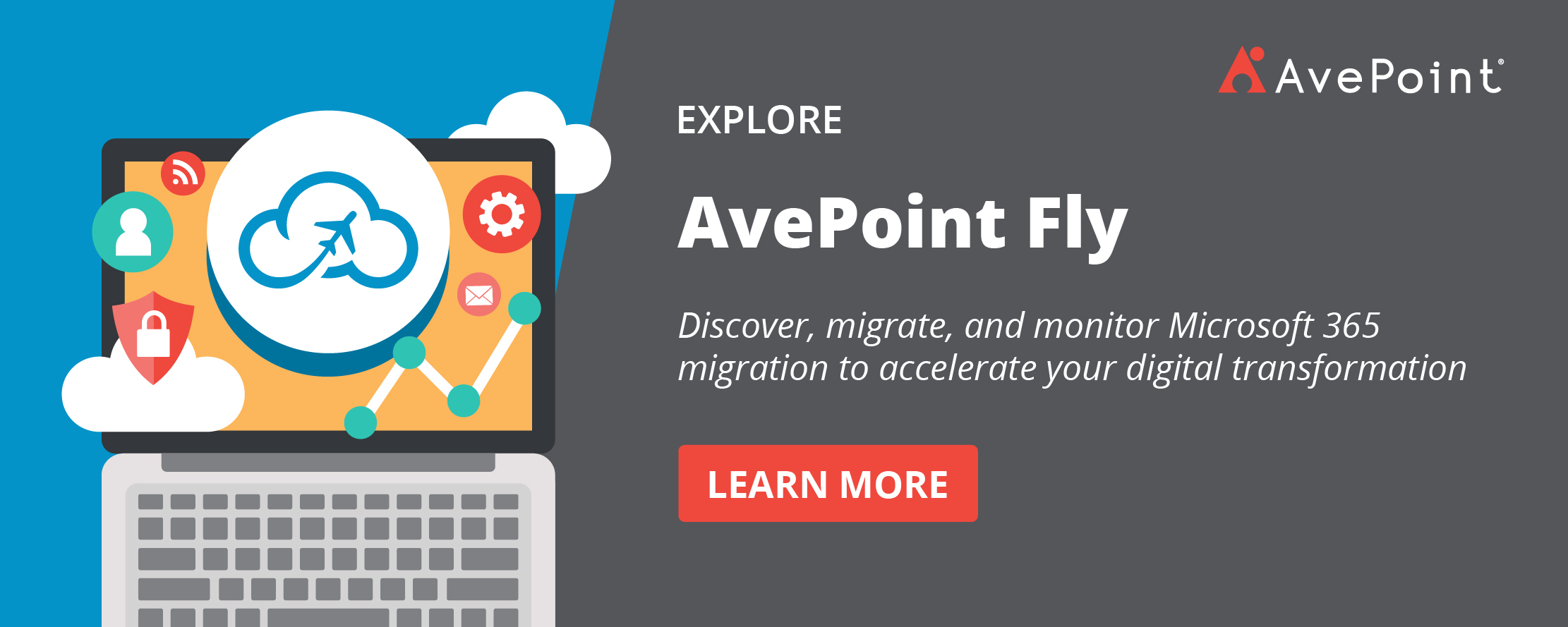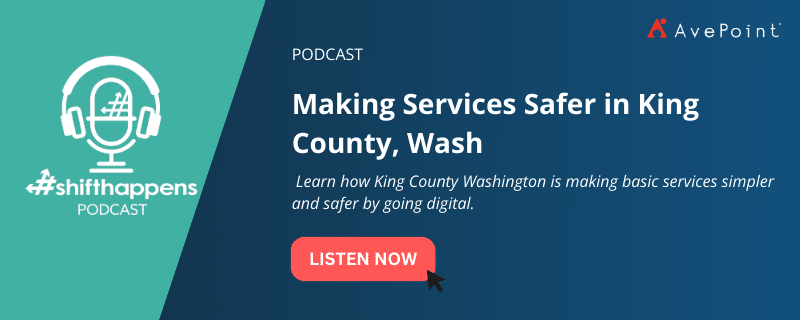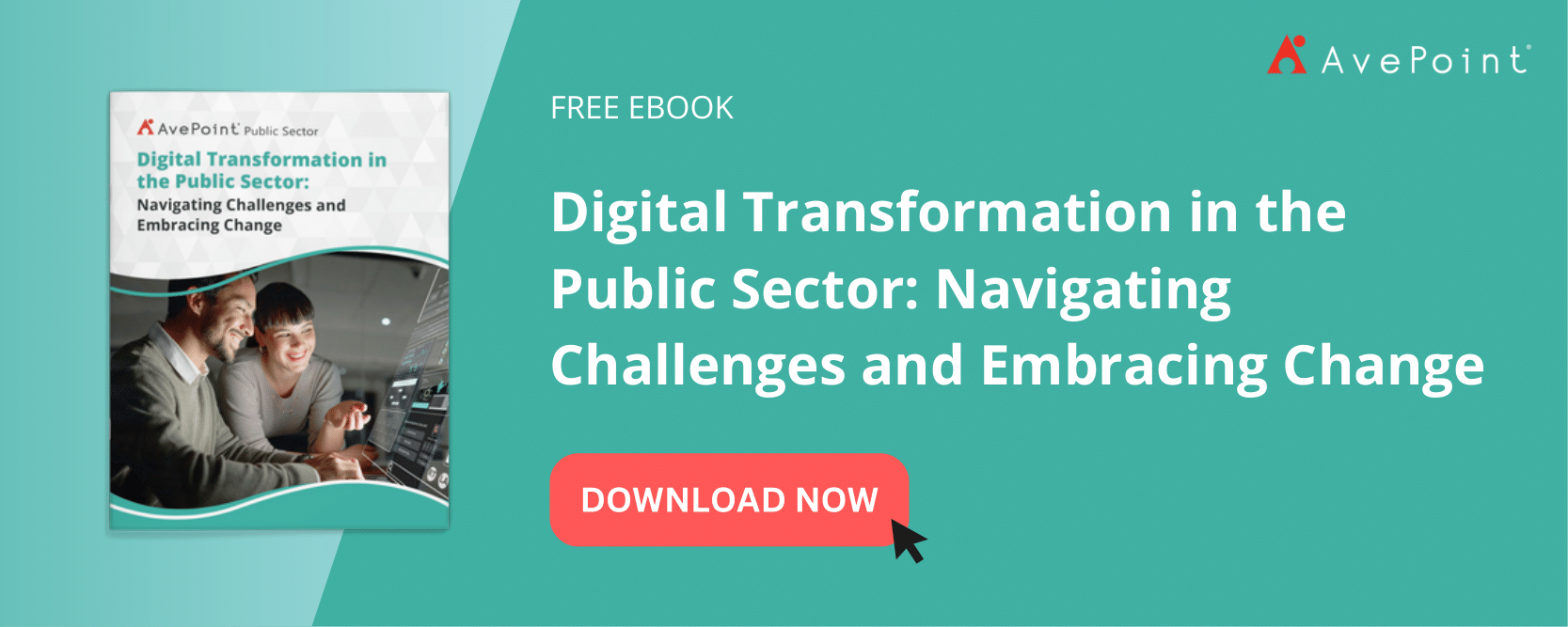Navigating Digital Transformation in the Public Sector: Key Strategies for Success

Digital transformation has revolutionized nearly every industry, and the public sector is no exception; 77% of government agencies say that digital transformation initiatives pushed during the pandemic are already having a positive impact on their organization.
The use of digital technology has the potential to improve efficiency, reduce costs, and enhance the delivery of services to citizens. However, implementing digital transformation in the public sector can be challenging due to a variety of obstacles, such as regulatory requirements and resistance to change.
In this blog post, we will explore the challenges public sector organizations face when embarking on digital transformation initiatives and provide strategies to ensure a successful transformation.
Overcoming Public Sector Cloud Concerns
Cloud technology has the potential to transform the public sector, yet concerns around data security, budgets, and compliance requirements have hindered widespread adoption. However, with the right strategies, these challenges can be surmountable.
Let’s explore some of the top public sector cloud challenges:
Cost and limited funding
Many believe cloud technology is that it is more expensive than legacy software. However, early adopters in the public sector have seen a 10-20% reduction in net costs with cloud computing, as it eliminates the need for expensive infrastructure, enables scalability, and reduces costly maintenance. Additionally, adoption costs can be subsidized through programs like the Technology Modernization Fund, which has helped agencies digitally transform for more than five years.
Compliance requirements
Maintaining compliance with mandatory government regulations is essential when moving to the cloud. Fortunately, many providers have experience meeting these standards and should be able to assist you. Particularly if you work with a FedRAMP-authorized vendor (which is required if you are a Federal organization), they should be well-versed in balancing these compliance and governance needs without sacrificing the ease of use and flexibility for end-users.
Security concerns
While operating in the cloud does introduce new security concerns, the reality is that security is more complex on-premises, requiring on-site staff and technical expertise; in the cloud, your vendor assumes responsibility for security, freeing up your IT team to focus on other tasks. As for security within your workspaces, establishing clear guidelines with your information security team can ensure that data is properly protected from the start.
Complex infrastructures
Many public sector organizations operate in large, complex environments, with fragmented or even siloed buckets of information in multiple systems or applications. Moving something of this magnitude is no small feat. This is made worse if your organization has not been operating under a proper governance framework or does not have a defensible disposition strategy in place – and it may require extra work upfront to ensure you create a clean, manageable destination environment.
Resistance to change from staff and stakeholders
Any change is bound to receive some resistance. Effective change management — with proper communication and stakeholder buy-in — will help smooth out adoption resistance. Additionally, cloud adoption enables organizations to offer flexible work arrangements and telework, which can help attract and retain top talent.
The good news: these challenges are all resolvable with the right guidance and approach. AvePoint’s comprehensive guide to Digital Transformation in the Public Sector offers a proven roadmap to plan, execute, and maintain your digital transformation, with expert tips and strategies that ensure your digital transformation efforts are successful.
King County, Washington is a great example of how public sector organizations can successfully adopt new technologies to drive long-term benefits for their operations and innovations. By adopting Microsoft Teams during the pandemic, King County was able to support remote work, online self-service, and customer safety. Learn more about their success story and how you can apply their lessons to your own digital transformation initiatives.
Strategies for Successful Data Migration and Digital Transformation
Digital transformation is a complex process, especially for public sector organizations that must navigate through bureaucratic structures, limited budgets, and changing political priorities. However, by following these five key strategies, public sector organizations can set themselves up for success in their digital transformation initiatives:
1. Building a strong foundation of leadership and governance: Digital transformation requires a clear vision and a strong commitment from leadership. Public sector organizations should establish a dedicated team to oversee the transformation process, define roles and responsibilities, and ensure that everyone is aligned on the goals and objectives of the initiative.
2. Completing a comprehensive data audit: Legacy systems tend to have a lot of old or unnecessary data, making it critical to conduct a data audit before embarking on a digital transformation initiative to assess your organization’s data assets and identify any data quality issues, redundancies, or gaps. A data audit can help ensure that the organization has the right data to support its digital transformation goals and that the data is accurate, complete, and reliable, helping to optimize end-user experience in the new environment.
Ace your data audit with AvePoint – learn more about our discovery process
 3. Prioritizing data security and privacy: As public sector organizations collect and use more data, it is critical to prioritize data security and privacy. This may involve implementing strong cybersecurity protocols, complying with relevant regulations like GDPR and CCPA, and educating employees on best practices for data handling and protection.
3. Prioritizing data security and privacy: As public sector organizations collect and use more data, it is critical to prioritize data security and privacy. This may involve implementing strong cybersecurity protocols, complying with relevant regulations like GDPR and CCPA, and educating employees on best practices for data handling and protection.
4. Training users on new systems: When implementing new systems, it’s important to ensure that users are trained effectively to use them. This may involve providing training sessions, user manuals, and other resources to help users become proficient with the new systems. Effective training can help reduce user errors and increase adoption rates.
5. Selecting a reliable and experienced partner: Implementing digital transformation initiatives can be a complex and challenging process. Digital transformation experts like AvePoint have completed thousands of migrations and have seen it all when it comes to moving data to the cloud or implementing a hybrid solution for public sector organizations. When unexpected issues occur, experienced vendors have a wealth of knowledge and expertise to draw from, and the chances of resolving problems quickly are more likely.
While this list of strategies may not be exhaustive, it serves as a great starting point to build a solid foundation for digital transformation. By implementing these five key strategies, public sector organizations will be primed to successfully navigate digital transformation and achieve their goals of improving citizen services, increasing efficiency, and driving innovation.
Get Started: Your Roadmap for Digital Transformation
If you are looking for a comprehensive roadmap to success, be sure to check out AvePoint’s comprehensive guide to Digital Transformation in the Public Sector. This guide offers a proven roadmap to help you overcome common challenges, migrate your data with ease, and build a secure, digital workplace without worrying about data security, compliance, and regulation requirements.
The guide covers everything you need to know to plan, execute, and maintain your digital transformation, including successful data migration and digital transformation strategies, cloud adoption success stories in the public sector, and solutions that can help you build a secure, digital workplace.
Whether you’re a government agency or a local public sector organization, our guide will help you streamline operations, optimize performance, and better serve citizens. Read our ebook on digital transformation in the public sector today.
Kayla Haskins is a Content Marketing Manager at AvePoint, writing about all things cloud collaboration – including Power Platform, Microsoft 365, Google Workspace, and Salesforce. An advocate of operational governance and process automation, Kayla creates content that helps businesses manage technology to drive efficiencies in the modern workplace and make work/life balance a reality.





